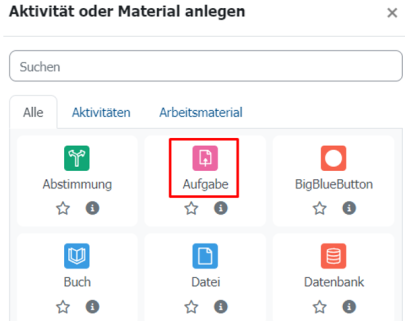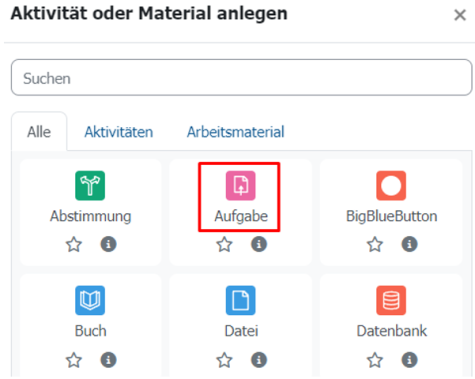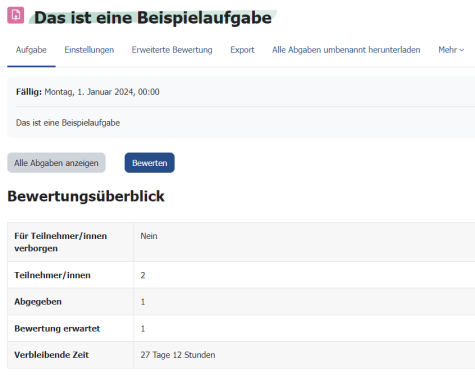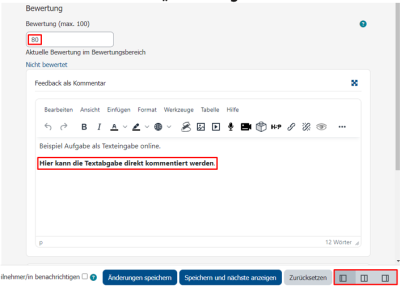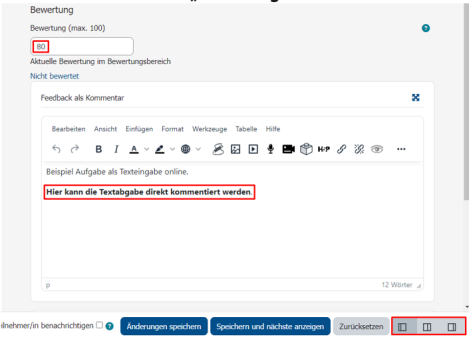Qualitative feedback through the assignment activity
Students can use the assignment activity to submit work in file form (e.g. pdf). These submissions can be graded by the teachers. In addition to a numerical grade, qualitative feedback is also possible. Moodle offers the necessary functionalities for this. You can use these as follows:
Preparation
To be able to grade the submission of an assignment, you first need the “Assignment” activity.
To do this, you must switch the course to edit mode using the “Edit” slider in the top right corner.
Then select “Edit” and “Edit settings” via the three dots next to the activity.
The following must be considered in the activity settings options:
Under “Submission types”, a tick must be placed next to each of the following:
- “File submissions”: Allows students to upload files. How many and in which format can be specified in more detail in the corresponding sub-items.
- “Online text”: Allows direct written editing of tasks without an external word processing programme.
Note: The “Online text” submission type uses Moodle's internal TinyMCE text editor, which also allows the recording and subsequent uploading of audio or video files. This makes it possible to realise new, interesting tasks and creative submission formats. You can also find more information on the recording function of the TinyMCE text editor in our FAQ article Functionalities of the TinyMCE text editor (section “Recording audio and video files”).
Furthermore, the main focus is on the “feedback types”. We recommend ticking the following boxes:
- “Feedback comments”: Allows commenting on the submission directly in the browser
- “Feedback files”: Allows previously prepared documents to be uploaded for grading purposes
- “Annotate PDF”: Allows commenting, correcting, labelling and stamping within the submitted solution directly in the browser
It is far more important to set the comment inline to “Yes”. You can find more information on the different types by clicking on the question marks next to the types in your course.
In the “Feedback types” image, you can see the points addressed highlighted.
After saving your settings, you have to wait until students have uploaded their assignments. As soon as a student has uploaded something, you can get a “Grading Summary” by clicking on the assignment.
Here you can see the number of participants and submitted assignments. If grades are expected, you can click on the “Grade” field highlighted in yellow and start grading the assignments.


